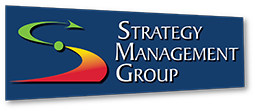There has been a lot of interest in my recent blog post: “Balanced Scorecard Gone Bad: What’s that Funky Smell?” Several people have posted comments and questions in various forums, but one in particular deserves special attention.
Dear Abby-Gail: I believe a key point in your message is that a strategy is never static due to external changes (e.g., competitor moves, new technologies), so it will require continuous adjusting. But this raises a different question. Since as strategic objectives change or the emphasis of what to accomplish within strategic objectives change, this means some KPIs may be dropped and others added (or their weightings may need to be tweaked). As a result, how much change in KPIs can an organization tolerate?
Dear Gary: This is an excellent question. When strategy changes, then KPIs will have to change. Organizational tolerance to change is affected by several things.
(1) Is the scorecard system engrained in the organizational culture such that management trusts the system and uses it to make decisions? If so, they will have relatively high tolerance for change in the KPIs because they understand that the change is necessary if they are to continue to rely upon the system to make strategically relevant decisions.
(2) Given that you know you need to adjust the KPI, how quickly can you achieve 7 data points on the new or adjusted KPI? In other words, is there baseline information available that will help you quickly establish an XmR chart? If not, can you achieve frequent enough reporting points to have useful trend analysis within 6 months? If you were using an excellent KPI in the past and then switch to one in which it will be a year (or more) before you have enough data for management to have the 7 data points needed to make statistically sound decisions, this will cause frustration and lower the tolerance for the necessary change.
(3) Can your software system handle these changes without losing your historical performance on the objective (assuming the objective does not change)? Knowing that you won’t be throwing away historical information increases tolerance for change.
(4) What about rewards tied to KPIs? How do your Human Resources processes link individual or group performance and incentives to KPI performance? What will be the result of changing a KPI right now? If it can’t be changed due to a covenant with employees, can it be removed from the calculation so that you don’t keep working towards an “expired strategy”?
I invite feedback from others. What else has impacted your organization’s tolerance for needed change in its KPIs? And does anyone want to share their tips for overcoming resistance to this sort of change?
For more challenges and solutions, we invite you to explore The Institute Way: Simply Strategic Planning & Management with the Balanced Scorecard.

 I was recently on yet another military base and had the opportunity to visit with a former Institute student – a U.S. Army Colonel. He had deployed to Kuwait just days after attending our Balanced Scorecard Boot Camp course in 2011. Upon arrival he found that the Army Contracting Command for which he was to be responsible was faced with tremendous challenges – from dealing with perceptions of corruption in the local supply chain to managing the extreme complexities of contracting for all of the products and services needed by the Army in such a challenging location.
This particular command needed a rapid transformation in order to achieve his vision of “being recognized by our customers as the best contracting office in the U.S. Army.” – a bold vision considering the challenges that he and his team were facing.
But before his tour of duty had ended, his contracting command had, indeed, received accolades and acknowledgement as being one of the best Army Contracting Commands anywhere in the world.
How did he lead his Command to achieve this vision in such a short time period? He applied his new knowledge and developed a strategic balanced scorecard.
A few “secrets” to the success of his scorecard implementation should sound familiar to students of The Institute Way:
I was recently on yet another military base and had the opportunity to visit with a former Institute student – a U.S. Army Colonel. He had deployed to Kuwait just days after attending our Balanced Scorecard Boot Camp course in 2011. Upon arrival he found that the Army Contracting Command for which he was to be responsible was faced with tremendous challenges – from dealing with perceptions of corruption in the local supply chain to managing the extreme complexities of contracting for all of the products and services needed by the Army in such a challenging location.
This particular command needed a rapid transformation in order to achieve his vision of “being recognized by our customers as the best contracting office in the U.S. Army.” – a bold vision considering the challenges that he and his team were facing.
But before his tour of duty had ended, his contracting command had, indeed, received accolades and acknowledgement as being one of the best Army Contracting Commands anywhere in the world.
How did he lead his Command to achieve this vision in such a short time period? He applied his new knowledge and developed a strategic balanced scorecard.
A few “secrets” to the success of his scorecard implementation should sound familiar to students of The Institute Way:





